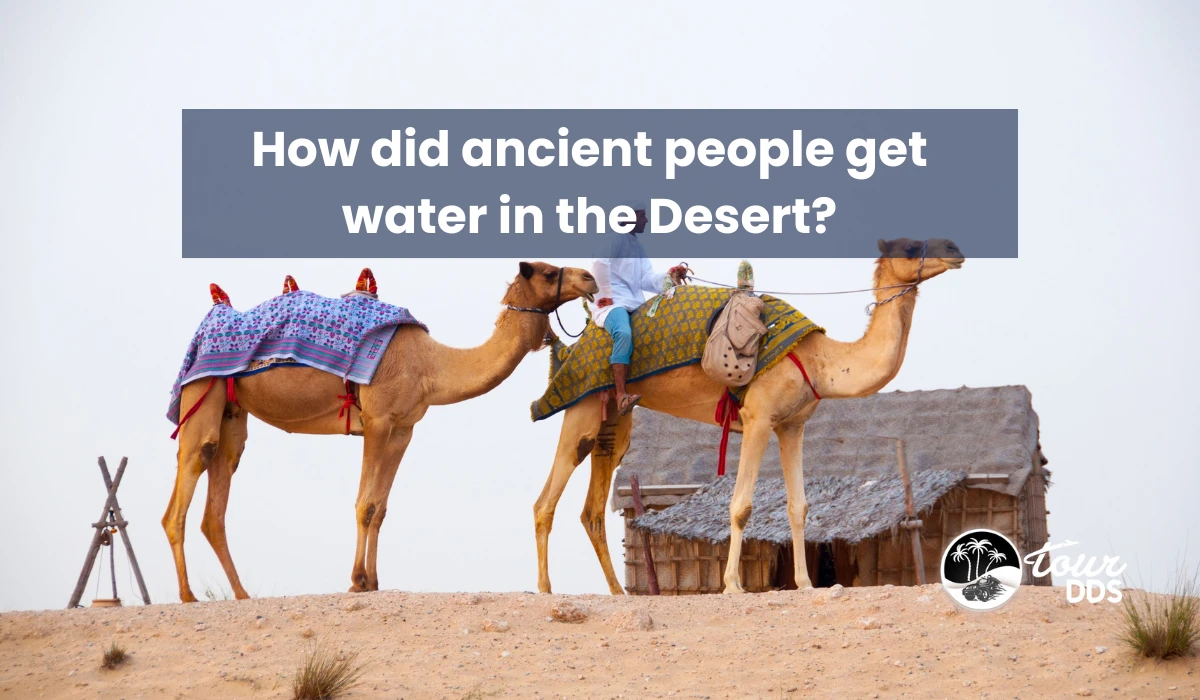How did ancient people get water in the Desert?
In Dubai's Desert Safaris, you see both luxury and excitement. It shows an interesting mix because people not only have to find ways to survive by getting water in a very hot and dry place, but they also show cleverness and creativity in doing so. This happens in a land where the dunes go on forever and the heat is intense. This blog explores the complex network of sources, tools, and customs that work together to slake the curiosity of those who dare to enter this amazing but difficult environment. Come along with us as we set out on an insightful mission to uncover the mysteries around water procurement and do not forget to book your spot at Tour Dubai Desert Safari to experience the thrilling venture. In the Desert, prehistoric humans mostly drew their water from wells dug by hand, falaj systems, and creative ways that involved using falcons to find secret springs. Dubai's desert scenery presents a great challenge because of its huge areas of uneven dunes and its largely sunny sky. It is located in the center of the Arabian Desert and is well known for its constant dryness. Seldom does it rain, and the unrelenting winds shape the dunes into ever-changing formations. The weather is harsh, with intense heat waves during the day and bitter cold at night. With this challenging environment, finding a sustainable water supply becomes more than simply a practical issue it becomes a very personal struggle for survival and creativity. Although it is enthralling, Dubai's Desert is the perfect example of an arid wilderness. In Dubai's merciless Deserts, water is considered the basis of life. It's more than just a product in this dry Desert; it's the key to survival. There's an endless need for water during the sweltering days and freezing nights. All organisms, ranging from the tough fauna to the resistant Desert flora, have evolved elaborately to preserve and pursue this valuable resource. Water is more than just a basic human necessity it protects against heat exhaustion, dehydration, and tiredness. It is impossible to survive in this hostile environment without a reliable supply. Thus, water assumes an almost religious meaning, representing resiliency and life itself in the face of the merciless Desert. Looking back, we can see the creative ways that successive generations of Desert people have obtained water in Dubai's arid terrain. According to historical accounts, complex underground tunnels known as ‘’falaj’’ systems were developed to capture valuable groundwater for agricultural purposes. The Bedouin tribes relied on the knowledge of falconry, employing these expert birds to find springs that were buried in the vast Desert. The famous wind towers, also known as "Barjeel," were feats of architecture that harnessed cool winds and directed them towards wells, shielding them from the intense heat. These methods, which are based on a thorough comprehension of the mysteries of the Desert, are evidence of how inventive and adaptive humans can be when faced with the most challenging circumstances. Human determination is demonstrated by the logistics of water transportation in Dubai's Desert. Water caravans traverse the vast sand dunes to make sure the valuable resource reaches isolated areas. These caravans frequently consist of camels or more contemporary vehicles. The water is secured in barrels, tanks, or pouches to shield it from the scorching sun. These caravans are essential to maintaining the Desert's infrastructure because they travel well-traveled tracks that resemble old trade routes. The voyage reflects an ongoing struggle for survival and the unwavering spirit of individuals who trek into the heart of the desert wilderness. It is a blend of tradition and contemporary. In Dubai's Desert, wells act as the kind guardians of life, providing a necessary and dependable supply of water. Their depths hide the food that keeps an entire ecosystem alive, yet they are treasure troves of human ingenuity and history. These wells, which draw water from underground aquifers, are essential to many towns and tourists. The simple act of digging a well, which is frequently a group effort, is evidence of human solidarity in the face of hardship. For decades, wells have provided relief and refreshment, but their importance goes far beyond practicality it includes culture, tradition, and the steadfast will to survive in the middle of this parched wilderness. In Dubai's Desert, environmentally friendly methods signify a paradigm change toward sustainability and conscientious water management. Such actions are critical in an atmosphere where every drop counts. Cutting-edge technology has evolved as environmentally friendly options, such as solar-powered desalination and water recycling systems. Water conservation and preservation of the natural beauty of the desert are achieved through the use of native plant species and xeriscaping in landscaping. The minimal ecological effect is also ensured by conservation and responsible tourism. These actions not only protect the environment but also foster a positive relationship with the desert, demonstrating that sustainable water management is an important and achievable aim even in the most difficult circumstances. Our quest to solve the water-related mysteries of Dubai's Desert Safaris has revealed an amazing mosaic of resourcefulness, tenacity, and respect for the element that sustains life: water. This tour has demonstrated the diverse aspects of surviving in the Desert, ranging from the harsh and dry terrain to the traditional ways of gathering water, and from the intricate logistics of water caravans to the everlasting importance of wells. Sustainable water management techniques and eco-friendly practices point to a positive change in the direction of a more peaceful living in this difficult environment. Dubai's Desert symbolizes the close bond between humans and the environment as well as the ability of humans to adapt. As our journey draws to an end, it's evident that the water riddles of Dubai's Desert Safaris remain a source of wander and inspiration. Desert dwellers obtain water through a combination of conventional techniques, cutting-edge innovations like recycling and desalination, and strategic initiatives like water caravans that are all designed to withstand the extreme conditions of the Desert. In the Sahara Desert, people usually get their water from oasis, underground wells, or, in certain cases, more contemporary techniques like desalination and water transportation. Natural aquifers, subterranean reservoirs, and occasionally artificial wells or water storage devices allow water to remain in the Desert.How did ancient people get water in the Desert?
Dubai’s Arid Landscape
Water as Life Essence at Dubai Desert Safari
Historical Perspectives and Traditional Methods of Water Sourcing
Water Caravans of the Desert
The Benevolent Wells
Eco-Friendly Practices with Sensible Water Management
Conclusion
How do Desert people get water?
How do people in the Sahara Desert get water?
How does water stay in the Desert?
Read More:













